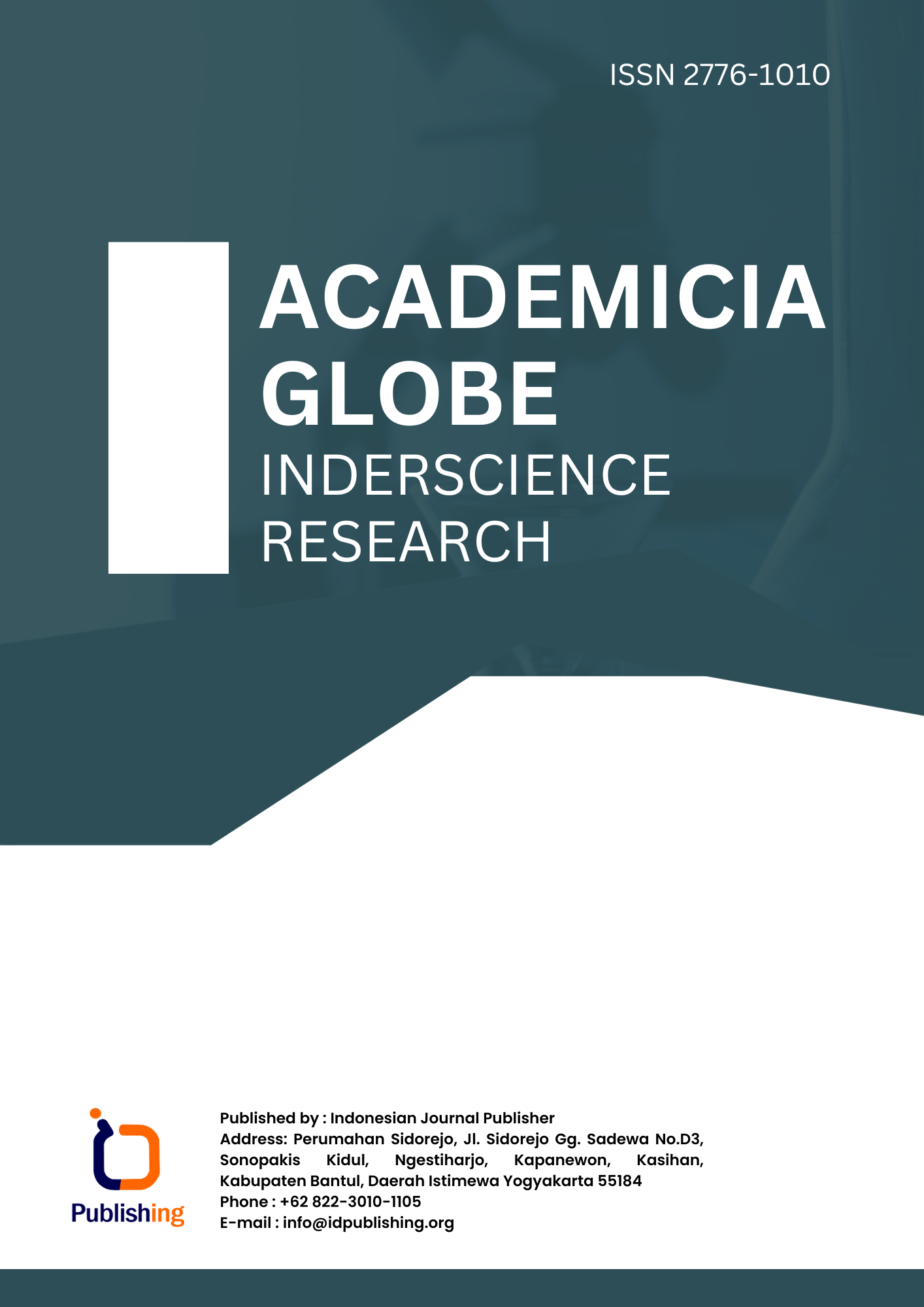Psycholinguistics of Reading In Foreign Language Contexts: A Comprehensive Overview
DOI:
https://doi.org/10.47134/academicia.v2i1.18Keywords:
Psycholinguistics, Reading comprehension, Second language, Cognitive Processes, Memory, Language Transfer, ESL, Digital Tools, Critical Thinking, Higher EducationAbstract
This article provides a comprehensive overview of the psycholinguistics of reading in foreign language contexts, with a particular focus on second language (L2) reading. It explores the role of reading in language acquisition, emphasizing its importance for learners of English as a second language (ESL) in higher education. The paper highlights key psycholinguistic theories and cognitive mechanisms involved in L2 reading comprehension, including those by scholars like Goodman, Smith, Koda, and Grabe. The research underscores the significance of integrating both lower-level (decoding) and higher-level (critical analysis) cognitive skills for successful comprehension. It also examines how language transfer, memory, attention, and digital tools influence the reading process. Recent trends in reading research, including the impact of technology and bilingualism, are discussed, showing how digital tools can enhance ESL reading skills. The article calls for the development of effective, personalized reading strategies that combine cognitive insights and interactive, technology-based methods to improve reading proficiency and academic success for ESL students.
References
Baker, L., Brown, A. L., & McNamara, D. S. (2021). Metacognition and reading comprehension: A critical review. Educational Psychologist, 56(4), 203-215.
Bakhronova, D., and U. Djalilova. (2024). "English Language and Uzbek Students: A Linguocultural Point." In Proceedings of the 1st Pamir Transboundary Conference for Sustainable Societies (PAMIR 2023), 192–195. SCITEPRESS – Science and Technology Publications, Lda, 2024. DOI: https://doi.org/10.5220/0012482200003792
Beibei, S. (2023). Psychological Impact of Languages on the Human Mind: Research on the Contribution of Psycholinguistics Approach to Teaching and Learning English. Journal of Psycholinguistic Research, 52(6), 2027-2045, ISSN 0090-6905, https://doi.org/10.1007/s10936-023-09977-w DOI: https://doi.org/10.1007/s10936-023-09977-w
Bright, J. A., & G. P. McGregor. (1970). Teaching English as a Second Language: Theory and Techniques for the Secondary Stage. Harlow, UK: Longman, 1970.
Cangır, H. (2025). Corpus Linguistics Meets Psycholinguistics: Insights From Turkish-English Collocations. Exploration of the Intersection of Corpus Linguistics and Language Science, 27-54, https://doi.org/10.4018/9798369381465.ch002 DOI: https://doi.org/10.4018/979-8-3693-8146-5.ch002
Goodman, K. S. (1967). "Reading: A Psycholinguistic Guessing Game." Journal of the Reading Specialist 6, no. 4 (1967): 126–135. DOI: https://doi.org/10.1080/19388076709556976
Grabe, W. (2009). Reading in a Second Language: Moving from Theory to Practice. Cambridge: Cambridge University Press, 2009. p17-21 DOI: https://doi.org/10.1017/CBO9781139150484
Green, D.W. (2025). Psycholinguistics: cognitive aspects of human communication. Cognitive Psychology: New Directions, 236-274, https://doi.org/10.4324/9781003582885-7 DOI: https://doi.org/10.4324/9781003582885-7
Koda, K. (2005). Insights into Second Language Reading: A Cross-Linguistic Approach. Cambridge: Cambridge University Press, 2005. DOI: https://doi.org/10.1017/CBO9781139524841
Krashen, S. (2010). Principles and Practice of Second Language Acquisition. Oxford/New York: Pergamon, 2010.
Kleimann, M., Ziegler, J. C., & Schlesewsky, M. (2021). Neurocognitive mechanisms in reading: Insights from neuroimaging and eye-tracking studies. Journal of Cognitive Neuroscience, 33(5), 850-868.
Macizo, P., Bajo, M. T., & Torralbo, M. (2020). Bilingual reading: The processing of lexical and syntactic information in bilinguals. Language and Cognitive Processes, 35(4), 457-475.
Mangen, A., Walgermo, B. R., & Brønnick, K. (2022). Reading linear texts on paper versus computer screen: Effects on reading comprehension. International Journal of Educational Research, 110, 101823.
Ni, C., Li, Y., & He, Y. (2023). Predictive processing during reading in second language learners: Evidence from eye-tracking and ERPs. Second Language Research, 39(2), 191-213
Pierart, B. (2021). "When a garden encourages you to read" A reading text test based on psycholinguistics. ANAE - Approche Neuropsychologique des Apprentissages chez l'Enfant, 33(171), 237-245, ISSN 0999-792X, https://www.scopus.com/inward/record.uri?partnerID=HzOxMe3b&scp=85108614870&origin=inward
Salminen, J. (2025). Decoding deception in the online marketplace: enhancing fake review detection with psycholinguistics and transformer models. Journal of Marketing Analytics, ISSN 2050-3318, https://doi.org/10.1057/s41270-025-00393-8 DOI: https://doi.org/10.1057/s41270-025-00393-8
Sattorava, F. 2014. “Relationship Between Critical Thinking and Reading Comprehension.” The Ministry of Higher and Secondary Education of the Republic of Uzbekistan, Uzbek State World Languages University, English Faculty III, Qualification Paper, Tashkent.
Smith, F., ed. 1972. Psycholinguistics and Reading. New York: Holt.
Srisang, P., and J. Everatt. 2021. “Lower and Higher Level Comprehension Skills of Undergraduate EFL Learners and Their Reading Comprehension.” LEARN Journal: Language Education and Acquisition Research Network 14 (1): 427–454.
Sweller, J. (2020). Cognitive load theory and instructional design. Educational Psychologist, 55(3), 195-213.
Downloads
Published
How to Cite
Issue
Section
License
Copyright (c) 2025 Kadirova Firuza Rustamovna

This work is licensed under a Creative Commons Attribution 4.0 International License.





